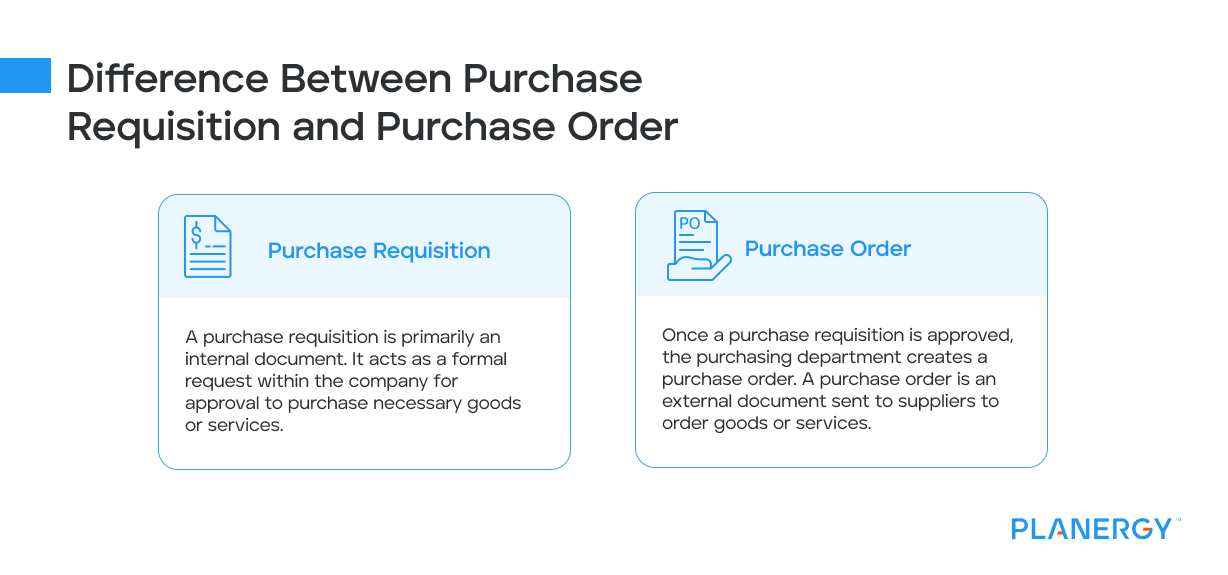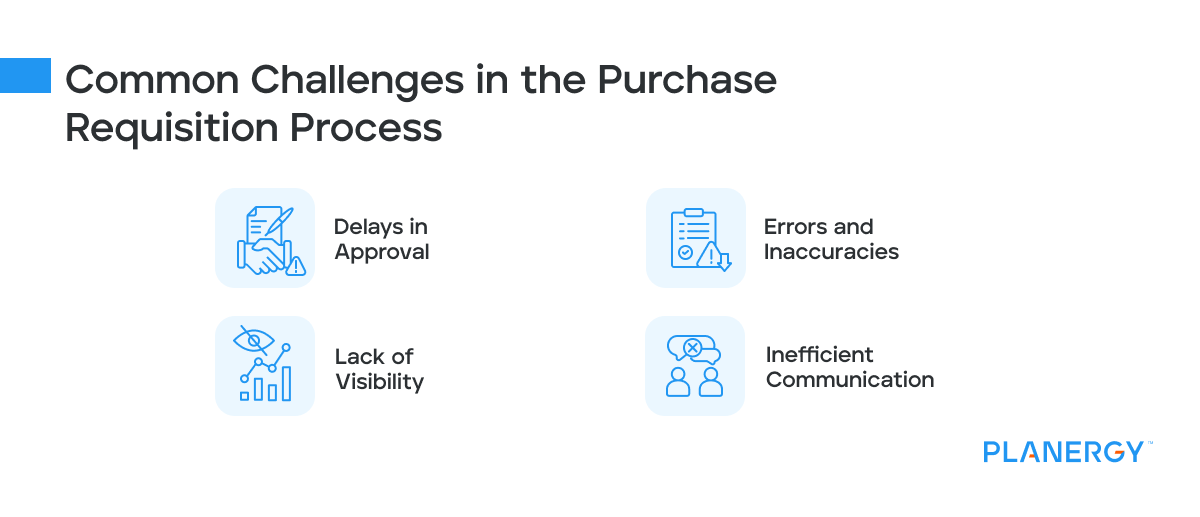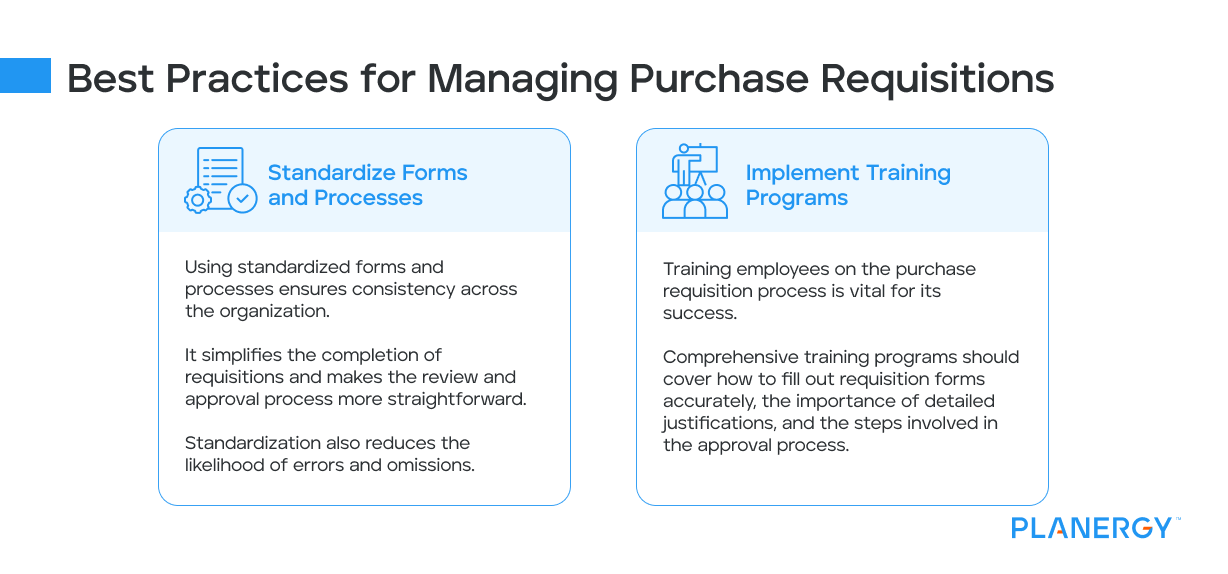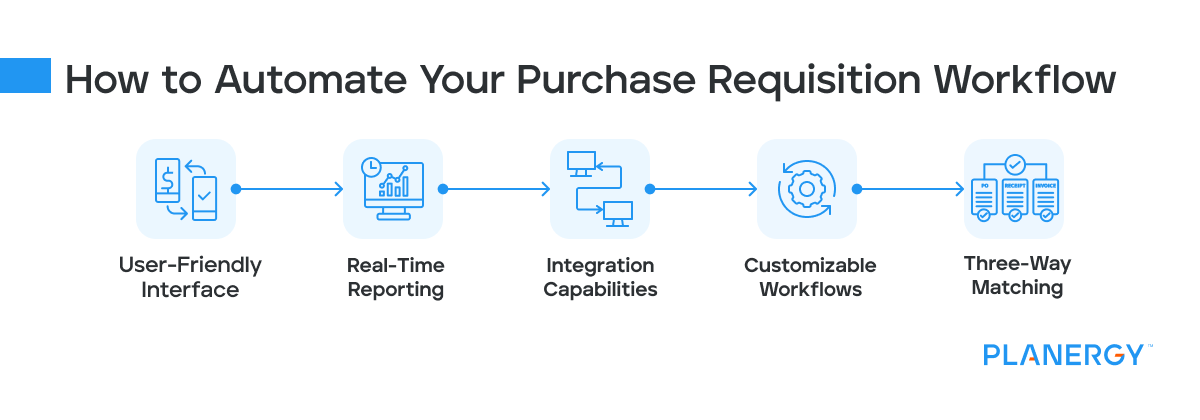Understanding the purchase requisition process is crucial for businesses aiming to streamline procurement, control budget, and ensure proper authorization.
This blog post will walk you through the essentials of purchase requisitions, how they differ from purchase orders, and why they are vital for your business operations.
Additionally, we’ll explore the steps involved in the purchase requisition process and discuss the benefits of automating this workflow.
What is a Purchase Requisition?
A purchase requisition, also known as a purchase request, is an internal document used by employees to request the purchase of goods or services on behalf of their organization.
This document initiates the procurement process by providing detailed information about the required items, their quantity, and the justification for the purchase.
Difference Between Purchase Requisition and Purchase Order
While both documents are integral to procurement, they serve different purposes:

Purchase Requisition
A purchase requisition is primarily an internal document. It acts as a formal request within the company for approval to purchase necessary goods or services.
This form ensures that all purchases undergo scrutiny and align with the company’s policies and budgetary constraints.
It involves multiple levels of internal approval before it can lead to an actual purchase, making it a critical tool for internal control and compliance.
Purchase Order
Once a purchase requisition is approved, the purchasing department creates a purchase order.
A purchase order is an external document sent to suppliers to order goods or services.
It is a legally binding contract between the buyer and the seller detailing the specifics of the products or services, agreed prices, delivery dates, and payment terms.
Purchase orders formalize the purchasing agreement and facilitate clear communication with suppliers.
Importance of Purchase Requisitions
Implementing a purchase requisition process offers several key advantages, including budget control, authorization, and transparency.

Budget Control and Spend Management
Purchase requisitions help businesses maintain strict control over their spending.
By requiring departmental and managerial approval before making any purchase, companies can ensure that every expenditure is justified and falls within the allocated budget.
This prevents overspending and assists in financial planning and forecasting.
Authorization
Authorization is a critical component of the purchase requisition process.
Companies can prevent unauthorized purchases by routing requests through appropriate channels and obtaining necessary approvals.
This structured approach mitigates the risk of fraud and ensures that all expenditures align with organizational priorities and policies.
Transparency
Maintaining a transparent record of requested and approved purchases is essential for accountability.
Purchase requisitions provide a clear audit trail, documenting who initiated the request, what was requested, and who approved it.
This transparency helps track procurement activities, prevent duplicate orders, conduct audits, and improve overall governance.
Information Included in a Purchase Requisition
A comprehensive purchase requisition typically includes several vital pieces of information to ensure clarity and completeness.
Requester’s Name and Department
Including the requester’s name and department helps identify who needs the items and which part of the organization the request is coming from.
This information is crucial for tracking and accountability purposes.
Date of Request
The date of the request provides a timeline for the procurement process.
It helps prioritize urgent requests and maintain an organized workflow.
Description of Items or Services Needed
A detailed description of the items or services needed ensures that there is no ambiguity about what is being requested.
This section should include specifics such as product specifications, model numbers, and any other relevant details.
Quantity and Estimated Cost
Specifying the quantity and estimated cost allows for better budgeting and financial planning.
It also helps compare vendor quotes and ensure the best value for the money.
Justification for the Purchase
Providing a justification for the purchase is critical for approval.
This section explains why the items or services are needed and how they will benefit the organization, ensuring that each request is necessary and valuable.
Approval Signatures
Approval signatures from relevant managers or departments are essential for authorizing the purchase.
This step ensures that multiple levels of oversight are applied before committing to the expenditure.
Practical Example: An employee in the IT department needs new laptops.
The purchase requisition form would detail the number of laptops, specifications, estimated cost, and justification, such as replacing outdated equipment to improve performance.
7 Steps in the Purchase Requisition Process
The purchase requisition process comprises several vital steps, each contributing to the smooth functioning of procurement activities.
Identification of Need
The process begins when an employee identifies the need for goods or services.
Recognizing this need promptly ensures that the procurement process starts without delay and that resources are available when required.
Filling Out the Form
The employee completes the purchase requisition form, providing all necessary details.
Accurate and thorough completion of the form is crucial for avoiding misunderstandings and ensuring that the right items or services are procured.
Using manual paper forms is time-consuming, so many opt to use digital forms in a purchase requisition system.
Internal Review
The relevant department head reviews the form to ensure accuracy and necessity.
This step involves verifying the details, checking for completeness, and assessing whether the request aligns with departmental goals and budget constraints.
Approval
Once reviewed, the requisition moves to higher management, finance, or the purchasing manager for final approval.
This level of scrutiny ensures that all purchases are authorized by senior personnel and align with the organization’s strategic objectives.
Creation of Purchase Order
Upon approval, a purchase order is created and sent to the supplier.
This document formalizes the purchase agreement, detailing the items or services to be procured, prices, delivery schedules, and other pertinent terms.
With procurement software, the approved purchase requisition automatically converts to a purchase order and connects to the purchase requisition number to make things smoother.
At the end, the finance team receives the invoice and can process payment quickly.
Order Fulfillment
The supplier fulfills the order as per the purchase order terms.
Timely and accurate fulfillment by the supplier is critical for meeting the organization’s operational needs and maintaining smooth business operations.
Receiving and Inspection
The goods or services are received and inspected to ensure they meet the specified requirements.
This final step ensures that the delivered items match the purchase order in terms of quality, quantity, and specifications, safeguarding the organization’s interests.
Advantages of Automating the Purchase Requisition Process
Automating the purchase requisition process delivers significant benefits, including increased efficiency, error reduction, enhanced tracking, and cost savings.
Increased Efficiency
Automation speeds up the entire purchase requisition and purchase order process by reducing manual data entry and approval times.
Automated workflows ensure that requests are processed quickly, minimizing delays and accelerating procurement activities.
Error Reduction
By minimizing human intervention, automation significantly reduces the likelihood of errors associated with manual handling.
This includes reducing data entry mistakes, miscommunications, and lost paperwork, leading to more accurate and reliable procurement processes.
Enhanced Tracking
Automation provides real-time tracking and status updates of requisitions.
This visibility enables better monitoring of procurement activities, helping managers keep track of pending requests, approvals, and order statuses.
Cost Savings
Streamlining operations through automation reduces administrative costs by decreasing the time and resources required for manual processing.
This efficiency translates into tangible cost savings for the organization.
Common Challenges in the Purchase Requisition Process
The purchase requisition process can present several challenges for organizations despite its importance.
Understanding these challenges is the first step towards addressing and overcoming them.

Delays in Approval
One of the most common issues is delays in the approval process.
Bottlenecks can occur when busy managers must review and approve multiple requisitions.
These delays can slow down procurement and impact project timelines.
Errors and Inaccuracies
Manual handling of purchase requisitions often leads to errors and inaccuracies.
These mistakes can range from incorrect item descriptions to miscalculated costs, resulting in procurement inefficiencies and potential budget overruns.
Lack of Visibility
Without a centralized system, tracking the status of purchase requisitions can be challenging.
This lack of visibility can lead to confusion, duplicate requests, and difficulties in auditing and reporting.
Inefficient Communication
Effective communication is crucial for the smooth flow of the purchase requisition process.
Inefficiencies in communication between different departments can result in misunderstandings, missed approvals, and delayed procurements.
Best Practices for Managing Purchase Requisitions
Adopting best practices is essential to overcoming common challenges and streamlining the purchase requisition process.
Here are some strategies to enhance efficiency and effectiveness.

Standardize Forms and Processes
Using standardized forms and processes ensures consistency across the organization.
It simplifies the completion of requisitions and makes the review and approval process more straightforward. Standardization also reduces the likelihood of errors and omissions.
Implement Training Programs
Training employees on the purchase requisition process is vital for its success.
Comprehensive training programs should cover how to fill out requisition forms accurately, the importance of detailed justifications, and the steps involved in the approval process.
How to Automate Your Purchase Requisition Workflow
Automating your purchase requisition workflow can be straightforward with the right tools.
PLANERGY offers a robust solution featuring several key functionalities.
And you can even take things a step beyond automated purchase requisition and approval to automate the entire procure-to-pay process.

User-Friendly Interface
PLANERGY’s intuitive interface simplifies the creation and approval process.
Employees can easily fill out and submit requisitions, while approvers can review and approve them with minimal training.
Real-Time Reporting
With PLANERGY, you can access real-time reporting tools that offer insights into purchasing patterns and expenses and help you see how well everyone sticks to the department budget.
These analytics help them make informed decisions and optimize procurement strategies.
Integration Capabilities
PLANERGY’s procurement solution seamlessly integrates with existing financial and ERP systems, ensuring a smooth transition to automated workflows.
This integration eliminates data silos and enhances overall operational efficiency.
By integrating the purchase requisition system with finance, businesses can better manage budgets and expenditures.
Automated approval workflows help control costs, and real-time financial data ensures compliance with budgetary constraints.
Integration with inventory management allows companies to maintain optimal stock levels.
Automated stock updates and reorder triggers ensure the right amount of inventory is available, minimizing overstock and stockouts.
An integrated setup ensures that all transactions are recorded and traceable.
This transparency helps maintain compliance with internal policies and external regulations and simplifies audit processes.
Customizable Workflows
PLANERGY provides customizable approval workflows that can be tailored to fit your business needs.
This flexibility ensures that the automation process aligns perfectly with your organization’s specific requirements and approval hierarchies.
For instance, if you need to purchase something basic like office supplies, you can set it up to automatically approve purchases below a certain amount from a certain vendor.
This bypasses the need to use the procurement team and allows the requestor to get what they need while still keeping everything in the procurement system for the finance department and accounts payable team.
Three-Way Matching
Three-way matching is a critical feature in automating the procure-to-pay process.
It involves verifying that the purchase order, the goods receipt, and the supplier’s invoice all match.
This process ensures that the business only pays for what was ordered and received, reducing the risk of discrepancies and fraud.
With PLANERGY, three-way matching is streamlined, providing an additional layer of accuracy and accountability in the procurement process.
Streamline Your Procurement with PLANERGY
A well-defined purchase requisition process is essential for controlling company expenditures and ensuring proper authorization.
Businesses can significantly enhance their procurement practices by understanding each step and the benefits of automation.
PLANERGY is an effective tool for streamlining purchase requisitions, making it an excellent choice for businesses looking to improve their procurement efficiency.




